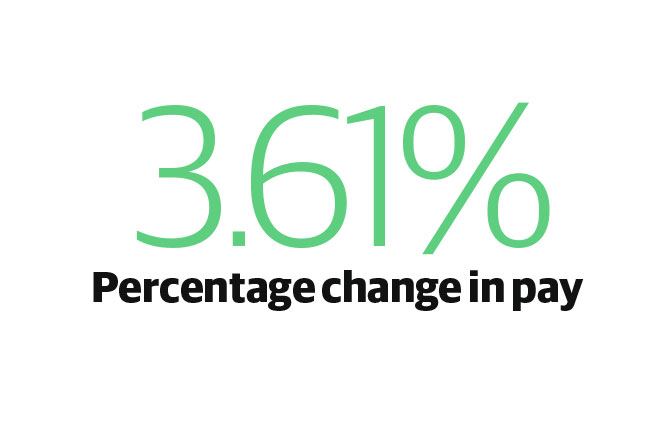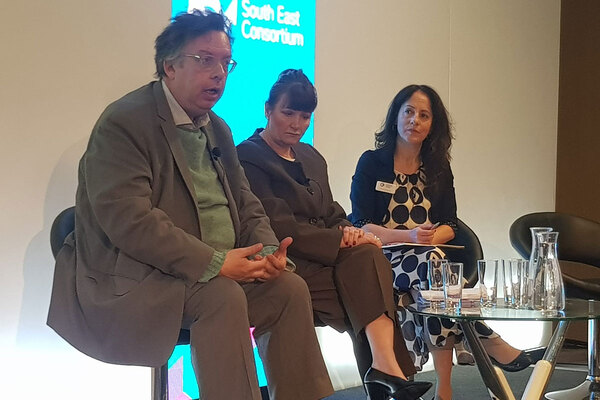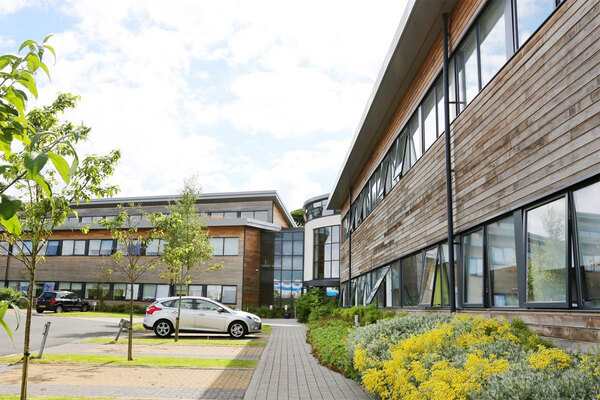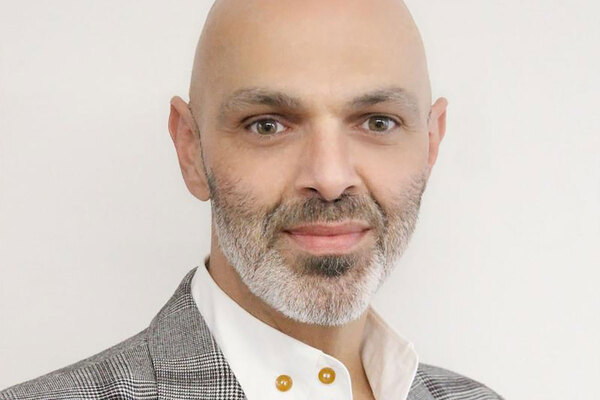Housing association chief executive salary survey 2019
Our annual chief executive salary survey shows that pay is up for the fourth straight year. Peter Apps takes a look at the stories behind the numbers. Illustration by Asako Masunouchi
The results of Inside Housing’s latest salary survey are in. The sector’s top chief executives were paid an average of £174,896 in 2018/19, with an average rise of 3.61%.
This was well above inflation, which sat at 2% at the end of the financial year. As before, we sent a survey to the country’s largest housing associations asking for a total pay packet, combining basic pay, bonuses and car allowance. For chief executives who joined midway through the year, the figures are annualised to allow comparison.
This year, the survey elicited 156 responses, providing our headline figures. However, the numbers demand some unpacking.
First, despite four successive years of rises, average pay is actually down from the £182,780 we reported in 2014/15. How is this possible?
The answer is the high volume of retirements. Many longstanding chief executives on high salaries have left their roles in this period, replaced by younger figures on lower bands.
So while the salaries of those who remained in post have continually cycled up, overall pay has come down.
So in fact, this year’s 3.61% rise refers to the average change among the 130 of the 156 executives who have been in their role through the past two financial years. While this is important in telling us how boards have rewarded their executives this year, it overstates the real-terms rise. Last year’s survey (with a slightly different mix of respondents) showed the average salary sitting at £173,274 – which would give a much more modest year-on-year rise of 0.94% for this year’s figure.
The average salary itself is also worth exploring in a little more detail. The average listed above is a mean figure (the total remuneration divided by the number of respondents). A median (the midpoint of the dataset) turns out a salary of £157,342. This may be a better average as it is less swayed by larger salaries at the top of the table.
Nonetheless, however you cut it, pay is up. What should we make of this? While housing associations have been flogged in the media over executive pay in the past, this sector does not do badly compared with others.
Among the FTSE 250, average chief executive pay is around £1.8m – more than 10 times higher than the average housing association salary.
Of course, it is absurd to expect the head of a not-for-profit housing association to have a comparable salary to the leader of a global listed company, but the divergence is worth keeping in mind. At the top end, housing associations would be big enough businesses by revenue to
feature on the FTSE index.
Housing association chief executive salaries 2018/19
Looking at the charitable sector, the median salary for chief executives is £52,000, based on a survey by Acevo, which represents third-sector leaders. But this includes 528 organisations with some very small charities where the chief executive is paid, in the lowest example in the dataset, £9,500.
What about private sector builders? Jeff Fairburn left Persimmon this year after receiving a pay packet of £85m over two years. This is almost four times the combined annual pay packet of all 156 bosses in this year’s survey. But it was also large enough to create a national scandal.
Barratt, the UK’s largest house builder, paid its boss David Thomas £3.6m for 2018/19 – a rise of £900,000 in a year. Bovis, which has struggled with reputational issues in recent times, paid its boss Greg Fitzgerald £2.18m. But this is the private sector: risk is higher and so is reward.
Ultimately there is no good external benchmark for housing association chiefs, and the question for what the right salary is must be one which boards of each organisation grapple with themselves.
A spokesperson for the Regulator of Social Housing says boards should “have regard to our standards in any decisions about executive remuneration and contracts”.
“Under our governance standard we expect providers’ governance arrangements to safeguard taxpayers’ interests and the reputation of the sector, and adopt and comply with an appropriate code of governance,” the spokesperson says, adding that boards must consider “whether their approach to remuneration and employment costs represent optimal use of resources”.
The emphasis on reputation is an important one. In 2015, under David Cameron’s government, executive pay was repeatedly used as a stick with which to beat housing associations.
The issue has receded a little, but it may return soon. “At the moment, everyone in government is too focused on Brexit to think about anything else,” says one senior sector source.
“But I could see that changing if we get a prolonged period with this government and Esther McVey remains housing minister.”
Indeed, sources have said Ms McVey has already raised the issue of executive pay in private meetings with organisations.
This is a risk which the sector must be aware of. A payday today may not feel worthwhile in a political row tomorrow.
Highest paid housing association chief executives 2018/19
The top two pay packages in the sector are the same this year as they were in 2018: David Cowans at Places for People and Jane Ashcroft at Anchor Hanover (last year known as Anchor, before its merger with Hanover). Both of these organisations explain their higher pay packages with reference to the complexity of their businesses.
The housing association arm of Places for People is only one part in a group that includes huge property management and leisure centre businesses, while Anchor Hanover is a major specialist housing and care provider.
As a spokesperson for Places for People says: “2018/19 was another successful year for Places for People under David Cowans’ leadership, increasing turnover from £754.4m to £827.1m and increasing profit before tax from £85m to £95.5m.
“A total of 1,876 homes were built or acquired during the year and 82,200 children are learning to swim each week at our leisure centres. The group chief executive’s total remuneration includes a bonus which is set by the group board based on his performance across all businesses and against social, environmental and financial targets.”
Dr Stuart Burgess, chair of Anchor Hanover, said: “With a turnover of more than half a billion pounds a year, it competes successfully with for-profit organisations in both care and housing, operates in 90 per cent of local authorities and employs more than 10,000 people.
“A detailed independent benchmarking exercise was undertaken in setting remuneration, including reference to the care sector. Total remuneration reflects performance in meeting demanding financial, compliance, customer and employee targets. Targets are constructed to ensure that we remain financially robust, deliver good services and are able to increase our capacity to meet growing demand.
“Overall performance compared with other large providers is strong. For example, our care business, which recently took on five new homes, recorded the highest compliance of all large providers.
“Having formed from the merger of Anchor and Hanover, the cost of the senior team is now significantly less than was the case for the two separate organisations.”
There are many familiar names in the rest of the top 10: Sanctuary, Clarion, L&Q and Peabody all featured in last year’s salary survey as well and are among the sector’s largest developers of new homes.
Highest housing association chief executive bonuses 2018/19
The same two names which top the pay charts are also at the head of the bonus charts, with Mr Cowans receiving £182,525 and Ms Ashcroft £84,839. But below these two, the gradient drops swiftly with the next biggest bonus being £41,340 to Mark Hoyland, chief executive of Orbit.
Our table shows 43 organisations paying bonuses this year, with the average figure £22,000. This ranges from Mr Cowan’s significant sum right down to £425 paid to Jim Ripley at Phoenix Community Housing.
Methodology
Inside Housing produced the survey by asking organisations to provide a figure for basic salary, bonuses and car allowance to provide a total salary for the year.
All the figures represent annualised salaries. Any chief executives who joined midway through the financial year will only have received a pro-rata pay cheque. The figures are also net of pension contributions to allow comparison with organisations where this data is not available.
For organisations where we were not able to gain a response to the survey, we sought results from annual financial statements. In a small number of instances, the results were either not available or do not specify chief executive pay. These organisations have initially been excluded from the research but will be added when they become available.
Organisations which pay bonuses defend the practice: the theory is that making a portion of the chief executive’s pay performance-based is a better use of money than a guaranteed salary.
At L&Q, which like many London associations has endured financial pressure relating to the London sales market and fire safety costs, bonuses were held back. This translated into a drop in chief executive David Montague’s salary, from £351,222 to £335,704.
Highest housing association chief executive pay per home owned 2018/19
Pay by homes owned varied greatly in this year’s survey: from Kate Dodsworth who was paid the highest figure of £46.35 per home at 2,890-home Gateway Housing through to Clare Miller – chief executive of the UK’s largest housing association, Clarion Housing Group – who received £3.07 per home. The mean average was £16.27 per home and the median £14.10.
Split by turnover, pay ranges from 0.04 pence per £1 of turnover (David Montague at L&Q) through to 0.74 pence per £1 of turnover (Kul Bains at WATMOS Community).
Evidently, these benchmarks add little by way of a real comparison between very big and very small housing associations – although they do serve as a reminder that the biggest salaries are not necessarily the ones which will worry the regulator.
Five biggest housing association chief executive pay rises 2018/19
Meanwhile, pay rose fastest at PA Housing this year, with chief executive Dilip Kavi offered a 27.5% pay rise to take his salary to £204,000. The 23,000-home housing association said this was the result of a “benchmarking” exercise.
“The board made the decision to award this rise following an external benchmarking exercise against sector peers,” a spokesperson said. “[Mr Kavi’s] salary previously remained the same for several years – this was despite the fact he had led the successful amalgamation of Paragon and Asra in 2017, taking the number of homes owned and managed by PA Housing to more than 23,000.”
A note on transparency: PA Housing refused to respond to the survey, meaning Inside Housing had to take the figures from its accounts.
Another large pay rise came at the top end of the sector - to Carol Matthews, chief execuitve of Riverside. A spokesperson for the organisation said: "[Ms] Matthews’ salary was increased in January 2019 as a result of changes to the organisation’s senior leadership team and to bring it closer in line with market rates for comparable roles in the sector.
“Carol is a highly respected leader, responsible for a large, complex national housing and care business with an annual turnover of £354 million. She personally chose to be paid less than her predecessor when she joined Riverside as chief executive in February 2012 and since then her salary has remained, and still remains, one of the lowest in the sector compared to the leaders of similar sized housing providers.”
At the other end of the scale, 40 chief executives took a pay rise of no more than inflation, four saw their pay remain the same, and nine had their pay packets reduced, largely as a result of lower bonuses.
Housing association chief executive gender pay gap 2018/19
This year showed some progress on gender pay. Average pay was 2.21% higher for male chief executives (£178,505) than it was for women (£165,630). This gap has closed significantly since last year when it stood at 8.2% – possibly assisted by some women taking the reins at large organisations as men have retired (most notably Geeta Nanda at Metropolitan Thames Valley and Clare Miller at Clarion).
Pay is also increasing faster among female chief executives than men: with a 5.35% increase for women and 3.37% for men. The year before the pay rises tended to favour men, with women seeing a 0.8% uptick, while male pay increased by 4.7%.
This is all good news, but overall representation still favours men with only 31% of chief executives female, a comparable position to the previous two years.
While it is right to call for this to be improved, it is worth pointing out that it remains a better story than the private sector: among the FTSE 100, for example, there are more male chief executives named either Steve or Stephen than there are women.
Update: at 11am on 13.11.2019
The table was updated to correct the salary of Andrew Potter, chief executive of Hastoe. It was originally stated as £142,000 which was his actual pay. However, as he joined in May his annual salary was £145,942.











